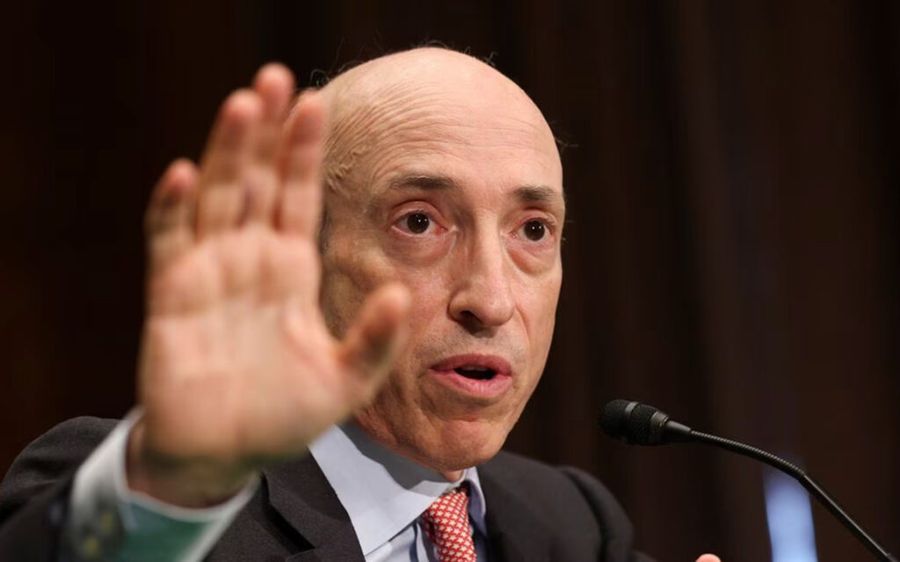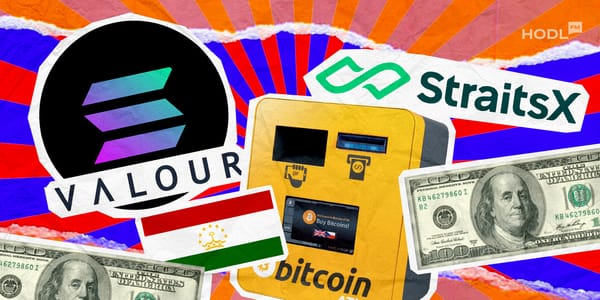Crack open a cold one, find your favorite cozy spot, and ensure your devices are juiced up – it’s time for our Weekly Crypto Digest. Welcome aboard our whimsical word wagon, where we journey through the landscape of digital delight, a place where binary is the lingua franca.
Unleash your inner tech enthusiast as we pull back the curtain on the latest from the realm where 0s and 1s aren’t just numbers, but the building blocks of innovation. So, buckle up, and let’s embark on a roller coaster ride through the dynamic world of technology. Be prepared to experience thrill and suspense, all wrapped up with our unique flair for lighthearted humor and engaging banter.
Remember, in this corner of the web, dull moments are as rare as a dinosaur in your backyard. So, brace yourself for an exciting journey. Welcome to the Chronicles of the Cyberspace!
The David and Goliath of Crypto: SEC Takes on Binance in a Tug of War
Venture into the world of cryptocurrency, where a simple week can feel like a millennium. A realm where ones and zeros replace gold and silver, where blockchain battles occur on a digital frontier reminiscent of the Wild West. This week, the sheriff strolled into town, not atop a horse, but within the virtual corridors of regulation. That sheriff is none other than the U.S. Securities and Exchange Commission (SEC), and it’s got Binance, the crypto behemoth, in its crosshairs.

The SEC, as relentless as a cyberspace Clint Eastwood, has accused Binance of offering securities that bear an uncanny resemblance to stocks – only without the necessary paperwork. Imagine showing up to a black-tie event wearing shorts and flip-flops. Yes, it’s that awkward.
This fracas was like someone had sparked a digital wildfire in a chat room crammed with Cryptocurrency magnates. The world of digital coins, usually a topsy-turvy roller coaster of ups and downs, plunged into an abyss of uncertainty. Let’s be clear; we’re not talking about the thrilling ‘Wild Travelers’ kind of adventure. We’re venturing more into ‘lock up your digital vault and keep an eye on the fluctuating exchange rates’ territory.
As the pixels settled down, it was like someone had smashed the ‘Emergency Exit’ button on a spaceship mid-warp. The SEC’s lawsuit against Binance triggered a cataclysmic market plunge. Traders were thrust into a dystopian nightmare, losing a whopping $320 million in liquidations. To put it in layman’s terms, it was like reaching the final boss level of a grueling video game, only for the game to suddenly freeze and reset. Frustrating? Yes. Unexpected? Not so much in the volatile world of cryptocurrency.

The dynamic dance between regulation and innovation in the crypto space continues, with traders, investors, and even crypto-canines (we’re eyeing you, Dogecoin) caught in the twirl. This dance-off isn’t a choreographed ballet; it’s more like a mosh pit at a heavy metal concert, spontaneous and raucous. As we spectate this ever-evolving scene, one thing is clear: surviving this digital arena requires a sturdy seatbelt, a reinforced helmet, and maybe even a supportive group therapy session. Buckle up, folks, the crypto-race is still in its early laps.
Crypto Chaos: SEC Lawsuit Sends Shockwaves Through Market as Traders Lose $320M in Liquidations
In a shocking turn of events, the cryptocurrency market experienced a sharp decline following the Securities and Exchange Commission’s (SEC) lawsuit against Binance, the world’s largest crypto exchange. Data by CoinGlass showed that cryptocurrency prices plummeted after news broke that the SEC accused Binance and its CEO, Changpeng “CZ” Zhao, of violating securities laws, the market took a nosedive, leaving crypto traders reeling. In total, there were liquidations of approximately US$320 million as prices fell sharply and long positions were liquidated. It appears that the sudden drop caught many investors off-guard, resulting in significant losses.
Tokens mentioned in the lawsuit, such as Binance’s BNB, Solana’s SOL, and Cardano’s ADA, led the decline, with some experiencing drops of up to 10% throughout the day. Bitcoin, the leading cryptocurrency, fell below $26,000 for the first time since mid-March, further adding to the turmoil. CoinGlass data revealed that nearly 119,000 crypto traders faced liquidations within a 24-hour period, highlighting the scale of the market upheaval.
BTC traders bore the brunt of the losses, with approximately $119 million evaporating from their positions. Ether investors also suffered, facing losses of $41 million as the token’s price dipped below $1,800. BNB trading positions were hit hard as well, with losses amounting to $6.5 million. Among the exchanges, Binance traders experienced the largest losses, totaling $105 million, followed by $88 million on OKX and $43 million on ByBit.
Read also our comprehensive reviews of Binance, OKX and ByBit crypto exchanges.
Unlikely Bedfellows: Mercedes-Benz takes a detour into the world of NFTs
In a twist that even Hollywood scriptwriters might balk at, traditional auction house Sotheby’s and iconic automotive behemoth Mercedes-Benz have decided to throw their hats into the somewhat bewildering ring of Non-Fungible Tokens (NFTs). It’s as if the Queen of England decided to try her hand at a rap battle, only less rhyming and more line coding.
This unlikely alliance between two giants from vastly different fields is like a culinary experiment, marrying the tanginess of tradition with the zesty flavor of technology. And voila! We get a dish that redefines taste boundaries and tantalizes our imagination about what’s possible.
But this move is more than a mere novelty. It’s an tectonic shift in the luxury landscape, a glimpse into the future where blockchain technology extends beyond its cryptocurrency cocoon to embrace newer, possibly shinier avenues. Imagine owning a virtual representation of a vintage Merc, an NFT that’s as uniquely yours as the real deal, without the worry of pesky parking tickets or exorbitant fuel costs.
Watching iconic brands like Mercedes-Benz nosedive into the relatively uncharted waters of NFTs is somewhat akin to seeing your grandparents ace a video game – surprising, amusing, but also oddly inspiring. We can’t help but ask, is this a brave, possibly reckless plunge into an unfamiliar world, or just a well-timed pitstop in the relentless race on the information superhighway? Is it a visionary leap or just a new way of repackaging the old?
Well, as the age-old wisdom goes, only time (and the relentless progression of technology) will tell. For now, as we cruise along the digital highway, let’s not forget to enjoy this unusual sight – of luxury cars and auction houses, making pitstops in the world of blockchains and NFTs.
Apple Vision Pro: The Metaverse Conundrum

Apple’s long-awaited mixed-reality headset, the Apple Vision Pro, made waves and raised eyebrows with its grand unveiling at the Worldwide Developers Conference on June 5. However, what stole the spotlight was the conspicuous absence of the term “metaverse” during the highly anticipated launch. In a deliberate move, Apple chose to position its cutting-edge technology as the world’s first “spatial computer,” shifting the focus to the concept of “spatial computing” rather than the buzzwords of “metaverse,” “AR,” and “VR.”
The forthcoming Apple Vision Pro is scheduled to hit the U.S. market in early 2024, carrying a premium price tag of $3,499, with global availability soon to follow. This strategic departure from the metaverse-centric approach adopted by competitors like Microsoft and Meta sets Apple apart in the burgeoning mixed-reality landscape. Apple’s Vice President of the technology development group, Mike Rockwell, underscored the magnitude of this innovation, highlighting the device as the most advanced personal electronics device ever created, seamlessly integrating hardware and software to deliver a standalone spatial computer in a compact wearable form factor. In January 2022, Bloomberg’s Apple tech reporter, Mark Gurman, hinted that Apple would forge its own path, distinct from Mark Zuckerberg’s Meta, emphasizing a focus on providing a mixed-reality headset optimized for short bursts of work, gaming, and communication. The Apple Vision Pro boasts augmented reality and virtual reality capabilities, enabling users to experience apps projected into their immediate physical space or immerse themselves fully in virtual environments. Powered by the world’s first spatial operating system, visionOS, the headset allows users to interact with digital content in a manner that feels tangibly present in their surroundings.
The announcement of Apple’s groundbreaking headset had investors eagerly anticipating a surge in metaverse-related tokens. Unfortunately, their optimism was dampened by a simultaneous lawsuit filed by the Securities and Exchange Commission, resulting in a decline in metaverse token prices. Despite the setback, Apple’s foray into the mixed-reality realm is poised to reshape the industry, offering a distinct and captivating vision of spatial computing that transcends the confines of the metaverse hype.



